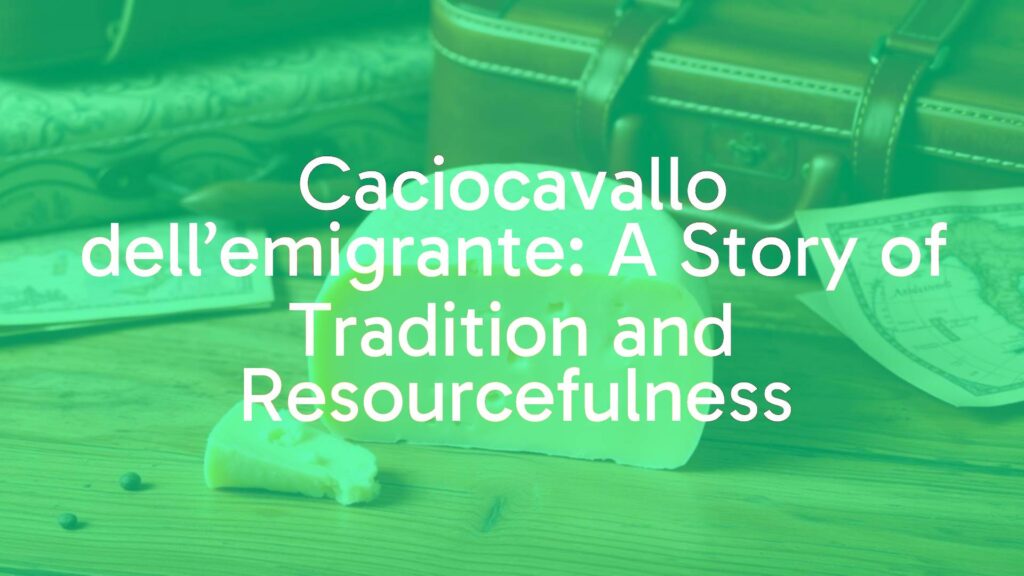Understanding Caciocavallo dell’emigrante
Caciocavallo dell’emigrante is a fascinating Italian cheese deeply rooted in the narratives of migration, preservation, and regional craftsmanship. This unique cheese stands out as a symbol of adaptability and heritage, born from the needs and culture of emigrants who traversed continents, carrying with them the tastes of home.
What Sets Caciocavallo dell’emigrante Apart?
Distinct from standard varieties of Caciocavallo, Caciocavallo dell’emigrante is renowned for its durability and portability. Crafted to withstand long journeys—both in time and distance—this cheese is denser, saltier, and firmer than its more commonly found relatives. Its iconic teardrop shape and glossy rind are typical features, but it’s the cheese’s remarkable shelf stability that made it particularly prized among Italians leaving for new lands.
Historical Roots and Development
The origins of Caciocavallo dell’emigrante lie in Southern Italy, particularly in regions like Molise and Campania where the tradition of Caciocavallo-making has flourished for centuries. During the 19th and early 20th centuries, waves of emigration from Italy led to innovations in food preservation. Cheesemakers adapted the classic Caciocavallo recipe to produce a cheese suitable for transatlantic travel—one that could endure without refrigeration, maintaining both flavor and edibility for extended periods.
How Caciocavallo dell’emigrante Is Made
The cheese is crafted from cow’s milk, following a process that draws on the pasta filata (“stretched curd”) technique shared with other southern Italian cheeses. The curd is heated, stretched, and molded into its distinct shape before being salted heavily and left to age in well-ventilated rooms. The aging process, often longer than regular Caciocavallo, is key to achieving its signature robust flavor and resilience. The result is a cheese with a pronounced savory taste, subtle tang, and a pleasingly chewy texture.
Role in Tradition and Culture
Caciocavallo dell’emigrante is more than just a cheese—it’s a testament to the enduring connection between Italian emigrants and their homeland. Often gifted to those embarking on long journeys or sent in care packages, it represented not only sustenance but also comfort and memory. In Italian communities abroad, it became a way to celebrate heritage and foster communal bonds.
Enjoying and Pairing Caciocavallo dell’emigrante
This cheese is traditionally enjoyed in thin slices, often as part of antipasti platters or alongside robust breads and dried fruits. Its bold, salty profile makes it an excellent companion to cured meats like salami and prosciutto, or paired with flavorful olives and sun-dried tomatoes. Given its density, it’s delicious grilled or gently melted over polenta or roasted vegetables. For beverage pairings, dry red wines or rich, malty beers enhance its savory depth.
Variations and Regional Differences
While the core characteristics remain consistent, local techniques and preferences can yield subtle differences in texture and flavor. Some versions from specific villages may incorporate sheep’s or mixed milk, resulting in nuanced taste profiles that reflect their unique terroirs.
Serving Tips
Allow Caciocavallo dell’emigrante to reach room temperature before serving to unlock its full aroma and complexity. For a traditional touch, try threading it with a twine and hanging it near the hearth, echoing the way it was once stored during migration—a small but meaningful tribute to its origins and story.

